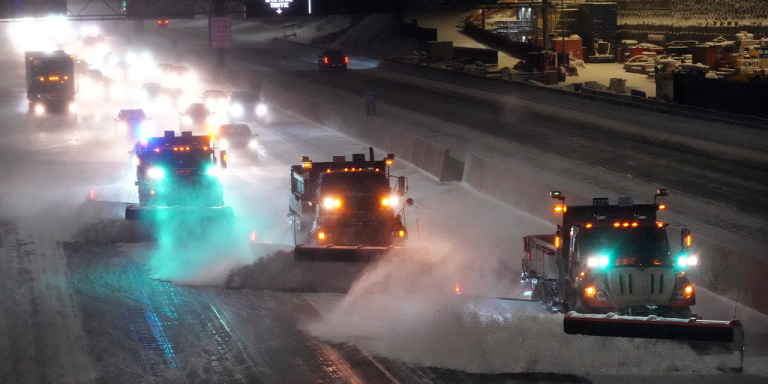Experts say polar vortex predicts 'nail biting'
Judah Cohen, director of seasonal forecasting at Verisk's Atmospheric and Environmental Research (AER), discusses the latest forecast for the polar vortex and what it could mean for US weather in early 2024.
The latest climate outlook from the National Oceanic and Atmospheric Administration (NOAA) shows that the weather pattern that has dominated the U.S. winter season so far is likely to continue into the first quarter of 2024, with only a few adjustments.
In a forecast released Thursday, the Climate Prediction Center said it believes January temperatures, overall, will average either at or above normal during what is typically the harshest month for winter weather.
“El Niño remains a major climate driver and is expected to be the main influence on the midlatitude circulation pattern and associated temperature and precipitation in January,” NOAA meteorologists said.
El Niño appears to be on the verge of a rapid collapse
The warm Pacific Ocean, along with the lack of snow cover in the northern United States and southern Canada, helps moderate any cold air mass that tries to invade the country.
In fact, the country is on track to have one of the snowiest Christmases on record, with just over 10% of residents in the Lower 48 expecting snow to be on the ground on December 25.
Snow shortages will likely continue in many parts of the Midwest through most of the winter, with much of the southern part of the country remaining windy.
With increased cloud cover and rain come cooler temperatures, but the mercury is far from record-breaking territory.
This pattern is typical of El Niño, which is expected to weaken in 2024, but no two El Niño events are alike and they are not the only feature that affects the weather.
One factor that NOAA forecasters said could lead to changes in its January and three-month forecasts is the influence of the polar vortex.
What is a polar vortex?
The effects of polar vortex disruption are expected to be limited in the United States
The question facing forecasters every year is when the polar vortex, which usually sends cold air into southern latitudes, will collapse.
When this arctic air reaches Canada and the United States, it can bring some of the harshest winter conditions and drop temperatures below zero. If cold air combines with moisture, communities could see large amounts of snow.
Forecasters believe a break in the current flow will occur in the new year, but early indications are that the air mass will not send the country into the tundra.
Stable polar vortex in the Arctic. (Fox Weather)
“There is no direct connection between what happens in the polar vortex and our weather, and there is a delay,” Judah Cohen, Ph.D. An atmospheric and environmental scientist who studies the polar vortex told FOX Weather. “So, you were talking about a sudden stratospheric warming. It takes about two weeks for the effects of a sudden stratospheric warming to affect our weather. That's why it's so useful for forecasting — because of the delay.”
Cohen said he believes the cold air will eventually reach the United States, but the event “will not reach its full potential.” In other words, cold air is coming in January, but the exact extent is still unknown.
The first month of the year is usually the coldest in most parts of the United States, with the meteorological midpoint of winter occurring around January 15.
January is the snowiest month for the locations shown on this map, according to the latest 30-year climate averages (1991-2020). (Fox Weather)
The National Oceanic and Atmospheric Administration (NOAA) forecast doesn't mean swimming days will be waiting for places like New York, Chicago or even Minneapolis — it will still be cold but not at usual cold levels, forecasters said. For example, the average mid-January day in Minneapolis starts at 8 degrees, and the high temperature only reaches the mid-20s. In recent days, highs have been in the 30s and 40s, and lows have generally been in the 20s, all above average.
So, although the temperature anomaly map may still resemble a blowtorch, the weather will still be too cold for many.

